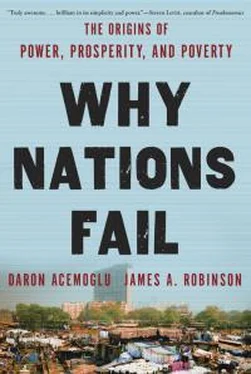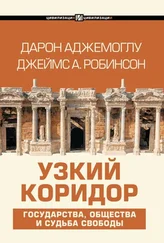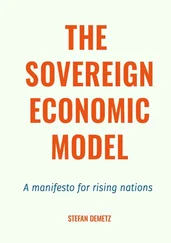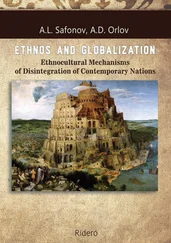When Cortés and his men arrived at the great Aztec capital of Tenochtitlan on November 8, 1519, they were welcomed by Moctezuma, the Aztec emperor, who had decided, in the face of much advice from his counselors, to welcome the Spaniards peacefully. What happened next is well described by the account compiled after 1545 by the Franciscan priest Bernardino de Sahagún in his famous Florentine Codices.
[At] once they [the Spanish] firmly seized Moctezuma … then each of the guns shot off … Fear prevailed. It was as if everyone had swallowed his heart. Even before it had grown dark, there was terror, there was astonishment, there was apprehension, there was a stunning of the people.
And when it dawned thereupon were proclaimed all the things which [the Spaniards] required: white tortillas, roasted turkey hens, eggs, fresh water, wood, firewood, charcoal … This had Moctezuma indeed commanded.
And when the Spaniards were well settled, they thereupon inquired of Moctezuma as to all the city’s treasure … with great zeal they sought gold. And Moctezuma thereupon went leading the Spaniards. They went surrounding him … each holding him, each grasping him.
And when they reached the storehouse, a place called Teocalco, thereupon they brought forth all the brilliant things; the quetzal feather head fan, the devices, the shields, the golden discs … the golden nose crescents, the golden leg bands, the golden arm bands, the golden forehead bands.
Thereupon was detached the gold … at once they ignited, set fire to … all the precious things. They all burned. And the gold the Spaniards formed into separate bars … And the Spanish walked everywhere … They took all, all that they saw which they saw to be good.
Thereupon they went to Moctezuma’s own storehouse … at the place called Totocalco … they brought forth [Moctezuma’s] own property … precious things all; the necklaces with pendants, the arm bands with tufts of quetzal feathers, the golden arm bands, the bracelets, the golden bands with shells … and the turquoise diadem, the attribute of the ruler. They took it all.
The military conquest of the Aztecs was completed by 1521. Cortés, as governor of the province of New Spain, then began dividing up the most valuable resource, the indigenous population, through the institution of the encomienda . The encomienda had first appeared in fifteenth-century Spain as part of the reconquest of the south of the country from the Moors, Arabs who had settled during and after the eighth century. In the New World, it took on a much more pernicious form: it was a grant of indigenous peoples to a Spaniard, known as the encomendero . The indigenous peoples had to give the encomendero tribute and labor services, in exchange for which the encomendero was charged with converting them to Christianity.
A vivid early account of the workings of the encomienda has come down to us from Bartolomé de las Casas, a Dominican priest who formulated the earliest and one of the most devastating critiques of the Spanish colonial system. De las Casas arrived on the Spanish island of Hispaniola in 1502 with a fleet of ships led by the new governor, Nicolás de Ovando. He became increasingly disillusioned and disturbed by the cruel and exploitative treatment of the indigenous peoples he witnessed every day. In 1513 he took part as a chaplain in the Spanish conquest of Cuba, even being granted an encomienda for his service. However, he renounced the grant and began a long campaign to reform Spanish colonial institutions. His efforts culminated in his book A Short Account of the Destruction of the Indies , written in 1542, a withering attack on the barbarity of Spanish rule. On the encomienda he has this to say in the case of Nicaragua:
Each of the settlers took up residence in the town allotted to him (or encommended to him, as the legal phrase has it), put the inhabitants to work for him, stole their already scarce foodstuffs for himself and took over the lands owned and worked by the natives and on which they traditionally grew their own produce. The settler would treat the whole of the native population—dignitaries, old men, women and children—as members of his household and, as such, make them labor night and day in his own interests, without any rest whatsoever.
For the conquest of New Granada, modern Colombia, de las Casas reports the whole Spanish strategy in action:
To realize their long-term purpose of seizing all the available gold, the Spaniards employed their usual strategy of apportioning among themselves (or en-commending, as they have it) the towns and their inhabitants … and then, as ever, treating them as common slaves. The man in overall command of the expedition seized the King of the whole territory for himself and held him prisoner for six or seven months, quite illicitly demanding more and more gold and emeralds from him. This King, one Bogotá, was so terrified that, in his anxiety to free himself from the clutches of his tormentors, he consented to the demand that he fill an entire house with gold and hand it over; to this end he sent his people off in search of gold, and bit by bit they brought it along with many precious stones. But still the house was not filled and the Spaniards eventually declared that they would put him to death for breaking his promise. The commander suggested they should bring the case before him, as a representative of the law, and when they did so, entering formal accusations against the King, he sentenced him to torture should he persist in not honoring the bargain. They tortured him with the strappado, put burning tallow on his belly, pinned both his legs to poles with iron hoops and his neck with another and then, with two men holding his hands, proceeded to burn the soles of his feet. From time to time, the commander would look in and repeat that they would torture him to death slowly unless he produced more gold, and this is what they did, the King eventually succumbing to the agonies they inflicted on him.
The strategy and institutions of conquest perfected in Mexico were eagerly adopted elsewhere in the Spanish Empire. Nowhere was this done more effectively than in Pizarro’s conquest of Peru. As de las Casas begins his account:
In 1531 another great villain journeyed with a number of men to the kingdom of Peru. He set out with every intention of imitating the strategy and tactics of his fellow adventurers in other parts of the New World.
Pizarro began on the coast near the Peruvian town of Tumbes and marched south. On November 15, 1532, he reached the mountain town of Cajamarca, where the Inca emperor Atahualpa was encamped with his army. The next day, Atahualpa, who had just vanquished his brother Huáscar in a contest over who would succeed their deceased father, Huayna Capac, came with his retinue to where the Spanish were camped. Atahualpa was irritated because news of atrocities that the Spanish had already committed, such as violating a temple of the Sun God Inti, had reached him. What transpired next is well known. The Spanish laid a trap and sprang it. They killed Atahualpa’s guards and retainers, possibly as many as two thousand people, and captured the king. To gain his freedom, Atahualpa had to promise to fill one room with gold and two more of the same size with silver. He did this, but the Spanish, reneging on their promises, strangled him in July 1533. That November, the Spanish captured the Inca capital of Cusco, where the Incan aristocracy received the same treatment as Atahualpa, being imprisoned until they produced gold and silver. When they did not satisfy Spanish demands, they were burned alive. The great artistic treasures of Cusco, such as the Temple of the Sun, had their gold stripped from them and melted down into ingots.
Читать дальше












